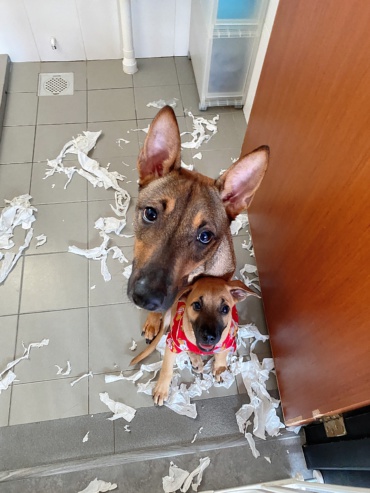If you’re wondering what is crate training and why is it important, you can refer to the link below:
So commonly when we adopt an older dog, we will often wonder if it is still necessary to crate train?

Of course Puppy guardians will find the crate more useful for training purposes than the guardians of older dogs. Still, there are some reasons you should crate train an older dog, such as for preparation in the event of emergency.
So I personally feel that these are best reasons to crate train an older dog:
- Security in an emergency situation
- Safe transportation via car/plane
- Easier veterinary visits and long-term care in case of illness or injury
- Providing a comfortable and safe location in high-stress environments
Crate training a dog of any age can be tricky because “being trapped” in a “tiny box” is scary! However, many dogs that are properly introduced to a crate may truly enjoy their relaxing time inside. Of course the ideal crate size has to be big enough for them to stand up and turn around without restriction.
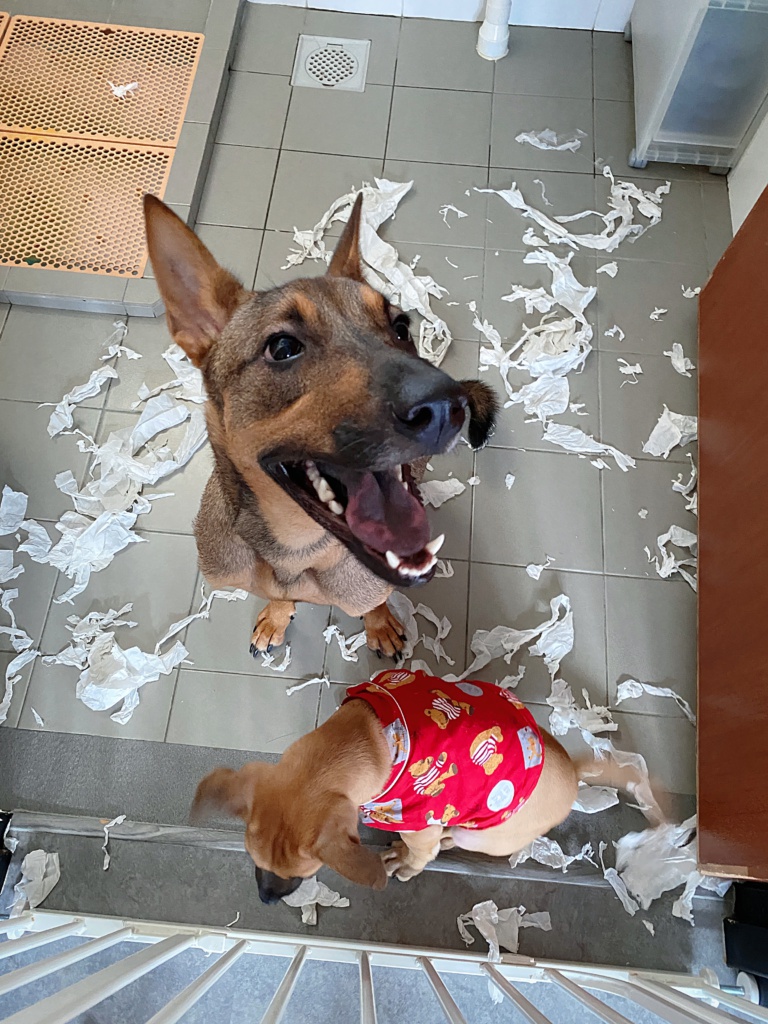
Kobe is crate trained, but not on command. Kobe is peepad trained, so he gets to do this number 1 and 2 on the shower area where the peepad is placed. And the rest of the space is where his water bowl is, and toys to keep him busy.
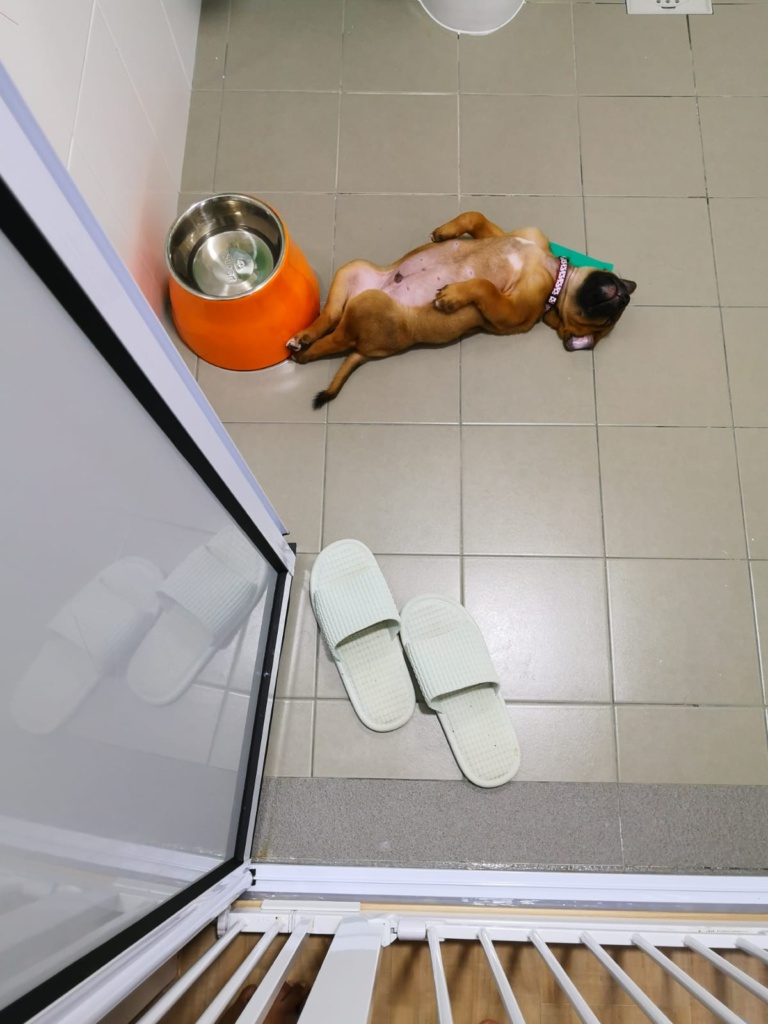
I know one high-energy SS puppy that’s being crated (His crate is the common toilet) for a few hours at a time while his mom is at work, chooses to hang out in his crate frequently in the evenings, weekends and overnight. Hence, it’s important to crate train properly. Because crates don’t come with instruction manuals, they can easily be unintentionally misused, causing your dog severe distress.
So like I mention, crate training doesn’t come with instructions, so it can easily be unintentionally misused. So I will highlight again.
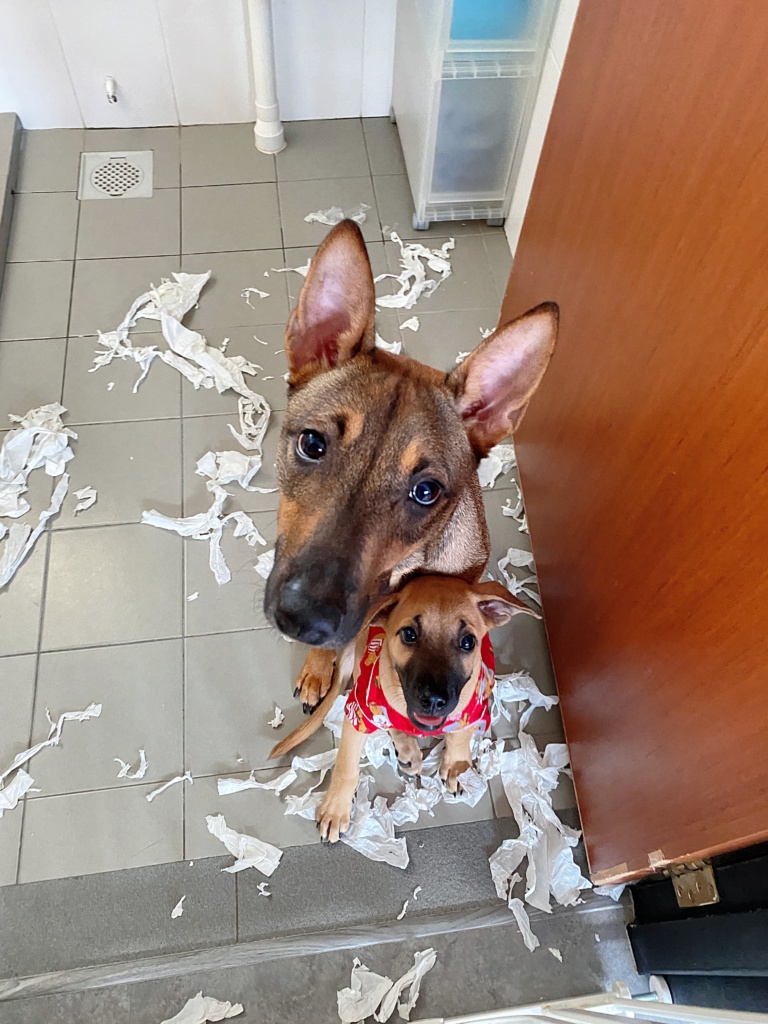
Introduce it Casually
The worst way you can introduce your puppy to the idea of a crate is to bring it home and lock him inside it immediately. People don’t like being trapped against their will, and neither do dogs. Instead, you should initially treat the crate like it’s just another piece of furniture — but one that he can enjoy. To this end, place it in a part of the house that he frequents, add a blanket and a toy or two, and keep the door open. Then back off and give him a chance to explore it. Some dogs will immediately start sniffing around and going into the crate, which is a great sign. If your puppy isn’t quite so bold, encourage him to check it out by placing favorite foods and toys near and inside the crate. The ultimate goal is to get him comfortable with going inside, and this is something that could take days. Be patient with the process.
After he’s willing to enter the crate, your next goal is to get him comfortable with staying inside for extended lengths of time. One of the best ways to do this (and create a positive association with the crate) is to start putting his food in the crate. If possible, you want to place the food at the back of the crate so that your dog goes all the way in. Some dogs may not be willing to do this, though, so you can start with the food just inside the crate and slowly move it back with successive meals. As soon as your dog is eating his meals while standing all the way inside the crate, it’s time to close the door. After he’s done eating that first time, open the door immediately. You’ll leave him in longer and longer with each meal, adding just a few minutes every time.
It’s possible that your dog may whine. If this happens, open the crate immediately and don’t leave him in as long next time. However, if he whines again, wait until he stops before letting him out or you will teach him that whining equals open door.
Once your dog is hanging out in her closed crate without signs of stress, it’s time to lengthen her stay. Use a favorite toy or treat to encourage her to enter the crate, then close it. Hang out by the crate for several minutes, then go into a different room for a few minutes so she gets used to the idea of staying in the crate alone. When you return, don’t open the crate immediately. Instead, sit with her again for a few more minutes and then open the door. Keep increasing the time as you do this until your dog is able to stay in the locked crate for half an hour without your presence. When she’s able to do this, she’s ready for you to leave her for short periods and possibly even sleep in the closed crate overnight. The key here is to make crating seem completely normal and avoid excitement. Encourage him to get into the crate and praise him when he does so, but keep it brief. When you come home, stay low-key and ignore any excited behavior that he shows.
Rules for successful crate training
- Never leave a dog inside a crate for longer than five hours at a time (with the exception of overnight).
- Make sure the crate is large enough for your dog to comfortably stand up, lie down and turn around in. The more space the dog has inside the crate to get comfortable, the better.
- If you have a very young or very tiny puppy whose bladder is underdeveloped, never leave them inside a crate for longer than they can hold their urine. (Unless you planning to peepad train him)
- The same goes for a senior dog with a weak bladder that needs to urinate frequently.
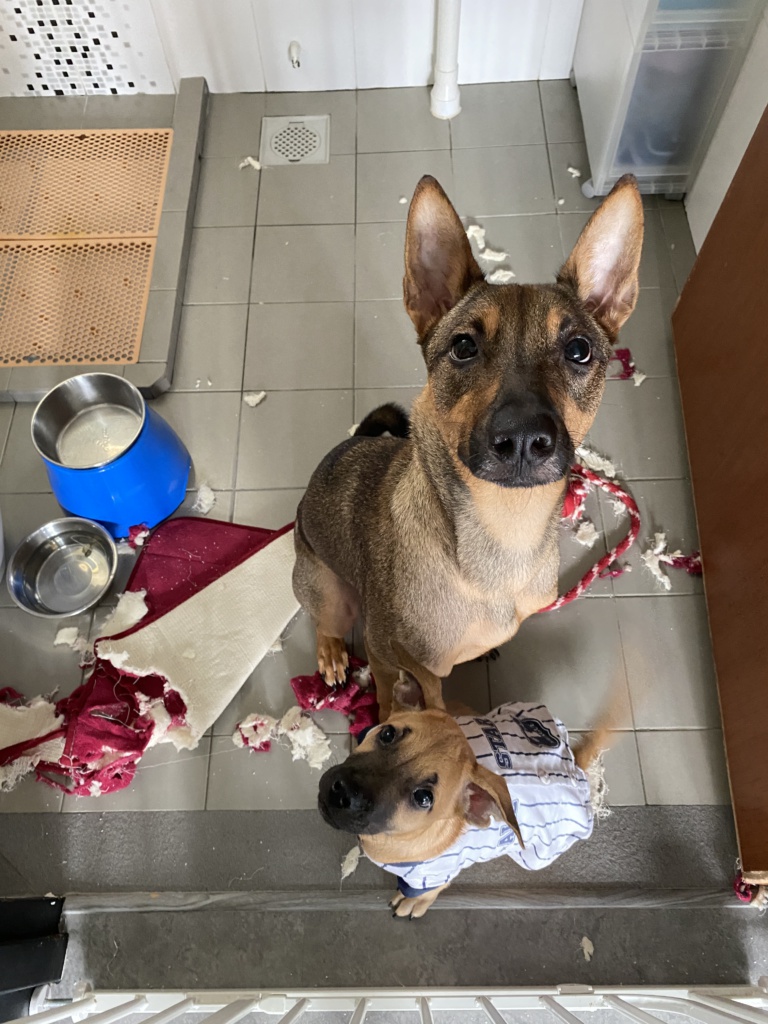
These training tips can help your dog love the crate
- Never force your dog inside the crate or close them in it for longer than they’re ready for. They must choose to go in on their own.
- Help your dog to choose to go into the crate by throwing a treat, leaving a bully stick or pig’s ear or placing a puzzle toy filled with high-value treats (i.e., peanut butter, hot dogs, chicken) inside.
- Gradually increase the period of time your dog spends in the crate. Begin by luring them in, closing the door for a couple of seconds, then letting them back out. Repeat this several times, then increase the interval by a few seconds. Repeat, slowly increasing the time they spend inside with the door closed.
- Place soft bedding inside the crate and provide access to water.
- Remember to NEVER leave your dog inside the crate with the door closed for longer than five hours at a time. The one exception to the rule is crating overnight, which is okay as long as your dog is a good nighttime sleeper.
- If your dog is having trouble adjusting to the crate and begins to howl, dig, or bite at the bars, put a sheet over to minimise visual stimulation.
All the information I shared is base on my knowledge and my research on how and what’s the best for crate training. Of course certain things I said you might not agree to what I say, or maybe it doesn’t work on your dog. If you have other ways or a better way of crate training, please leave on the comment below so we all dog owners/lovers can learn something too!
